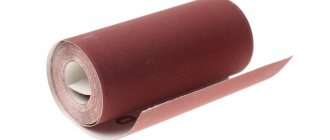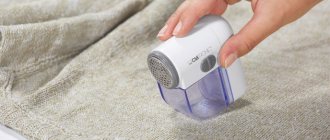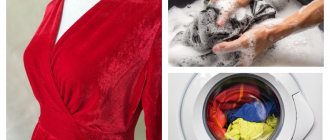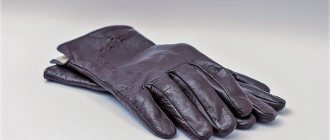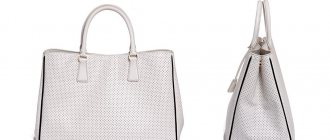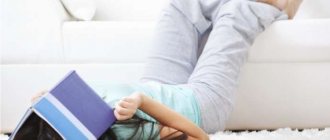The jacket is a popular wardrobe item that looks great with trousers, skirts and even jeans.
With the right combination, it will help create a casual, business or evening look. However, a jacket, unlike most other things, requires special care, and putting it in order on your own, without knowing the basic rules, is not so easy.
This is because not all jackets can be simply washed in a machine - they can lose their shape. It is too expensive to constantly send an item to the dry cleaner.
You can put things in order without much financial expense, but how to clean a jacket at home? For this, there are special methods of dry and wet cleaning. Let's start with the first one.
Getting rid of dirt and dust with dry cleaning
This method is suitable for removing small debris: hair, dust, threads, etc. This procedure can only be carried out when there is minor, superficial contamination of the item of clothing.
Dry cleaning a jacket at home is very simple - just take a soft brush or a special roller with an adhesive surface (sometimes even regular tape will do) and carefully walk over its surface.
You can also purchase a dry cleaning kit for these purposes.
What type of cleaning is right for you?
For capricious fabrics for which any type of washing is contraindicated, wet or dry cleaning is suitable. Moreover, the first one is also not suitable for all materials.
Difficult stains are removed with soapy water.
This method is intended for more serious contamination. When wet cleaning, you first need to clean the areas that are damaged the most.
Then go over the entire surface of the jacket with a soap solution. First you need to prepare the product.
To do this, take three tablespoons of liquid soap and dissolve in 0.5 liters of warm water until a homogeneous mass is obtained.
Instead of liquid soap, you can also use laundry soap, having first finely planed it.
Then lightly dip the fleecy part of the brush into the solution and carefully work the fabric, trying not to wet the jacket too much. This way you can quickly clean men's and women's jackets.
Suede jacket
Suede clothing is a bright statement of your own style. And it implies an individual reading style, namely steam cleaning. Nowadays steam generators, steamers, steam irons and other smart things are being produced that can make your life easier. But if you haven’t purchased anything suitable yet, just steam the suede product over a kettle or pan. Air dry and brush with a suede brush.
All of the above methods of reading for suede are not suitable, make no mistake!
We told you how to bring your suit back to its original form using improvised means. Try it, we think you'll like it!
Home dry cleaning
Dry cleaning a jacket at home is not as difficult as it might seem at first glance. There are several cleaning options using various products, for example, ammonia, vodka, vinegar, raw potatoes, etc.
Cleaning a jacket with ammonia
One of the home methods for dry cleaning a jacket is to treat its surface with ammonia. The solution is easy to prepare.
To do this, you need to take and mix 6 tablespoons of ammonia with 1 teaspoon of soda. You can then clean your greasy jacket with this solution.
Make it more convenient either using a special roller or using another option - a soft sponge or a brush with soft bristles. As you can see, removing a stain from a jacket is not difficult.
Clean the jacket with vinegar or vodka
Another good and easy-to-use method for cleaning suits at home is using table vinegar.
Take a solution of vinegar and water, heat it slightly in a water bath, then dip a cotton swab in the vinegar and treat stains on clothes.
The method of using vodka when cleaning a jacket is identical with only one difference - the vodka does not need to be heated or diluted with water.
Cleaning a jacket with raw potatoes
For this procedure, you need to take a clean potato and cut it in half. Use the resulting cut to rub the greasy area of the jacket. Then we remove traces of potatoes with a cloth.
Removing stains using ammonia and alcohol
A solution of water, ammonia and medical alcohol perfectly cleans stains. To prepare it, you need to take 200 ml of water and one teaspoon each of alcohol and ammonia. Mix all components, and then treat the desired surface with a swab or cloth.
We treat the jacket with special means
Clothes cleaning solution can be purchased at any specialty store. Each product has instructions and you must act as indicated in it.
However, it is worth remembering one important point - the dry cleaning product must first be “tested”. For the experiment, a separate flap or the most inconspicuous part of the jacket is suitable, for example, inside the sleeve on the far side of the cuff.
Lightly work a small area and see how the fabric reacts to the solution. Start cleaning your jacket as soon as you are sure that the product will not ruin the item.
Should you clean your jacket with gasoline?
Some people advise removing greasy stains from a jacket using gasoline, but this method is rather dubious and unsafe. There is a huge risk that the stain will not only persist, but will become much larger and more noticeable.
What you need to know about the jacket material
Jackets in a formal business style are made mainly from suit fabric. The composition of such fabric includes polyester, elastin, and sometimes natural cotton threads. This fabric is quite durable, but it is not recommended to machine wash it. The jacket may lose its shape, shrink, or wrinkle from washing so that it will be impossible to iron it out without a powerful steamer.
Under no circumstances should suede items be machine washed. Capricious material requires special careful handling. Wool, subject to certain rules, can be loaded into the drum of a washing machine. But if the thing is expensive, then it’s still better not to take risks.
Thin jackets made of linen, some types of cotton and bamboo fabric can be safely put into automatic washing. In any case, you must study the information on the product label and follow the recommendations provided.
There are practical options for how to clean a jacket yourself by hand without soaking the fabric. Manual types of cleaning will eliminate deformation and damage to the item, and return it to cleanliness and freshness.
Where should I start?
We have already dealt with the means of removing contaminants, and it is time to begin the actual procedure of cleaning the product at home.
The most predictable stains on a jacket are usually found on the collar, cuffs, pocket lapels (or holes near them) and at the elbow.
How to clean a jacket collar?
This area is best treated with soapy water or a potato tuber. Both methods work great on greasy stains.
After processing, the wet collar must be ironed through gauze and hung on a hanger, carefully straightening all the elements of the jacket. This method is also perfect for processing the outside of pockets.
Elbows and cuffs
When deciding how to rid a jacket of greasy shine and how to clean shiny sleeves, you can resort to one of the previously described methods.
The algorithm of actions here is the same as in the case of the collar and pockets. And do not forget, after processing, to thoroughly iron the areas with an iron through gauze, and then hang and straighten the product.
Cleaning elbows and cuffs
Apart from the collar, the most problematic areas are the elbows and cuffs. Gasoline or benzene will cope with the task of removing shiny stains from a jacket. The product is applied with a soft sponge to damaged areas. Then, with a solution consisting of 1 liter of water and a tablespoon of ammonia, wipe the treated areas and dry with an iron.
Important! The smell of gasoline disappears in a few hours in the open air.
How to clean a jacket at home without washing?
Let's look at a step-by-step method for processing things that cannot be washed:
- Lay out the jacket on a flat, clean surface previously covered with a light-colored fabric, such as a sheet.
- Treat the entire surface of the jacket with a brush or a special roller. Shake it out so there is no debris left.
- Clean stains and major stains using one of the previously described methods. If this method does not help, you can use industrial stain removers.
- Prepare a soap solution.
- Dampen a brush in it and work the jacket on all sides.
- Clean the jacket again, but this time with a brush dipped in clean water.
- Dry the wettest areas with a towel.
- Hang your jacket on a hanger and open the window to ventilate the room.
General methods for cleaning jackets
Sometimes the jacket gets more dirty than usual, and then a simple damp cloth will not be able to restore it to its proper appearance. Fortunately, there are many ways - both improvised and professional - that will allow you to quickly get your clothes in order before an important meeting.
Handy methods
Traditional methods are famous for their cheapness and accessibility. Each of these ingredients is likely to be found at home, so cleaning your jacket using the following methods will be practically free:
- Toothpaste will help deal with oily stains, such as grease that dripped onto your jacket during a business lunch. Apply a small amount of paste to the stain, rub lightly with your finger or sponge and leave for 5-10 minutes. After this, carefully remove the paste with a damp sponge. Try not to rub - suit fabric can very easily absorb the white color of the paste, which will not be easy to remove. The method is only suitable for light and gray fabrics. Don't use it on black jackets;
Toothpaste copes well with stains on suit fabric - salt is an effective remedy not only for removing dirt, but also for removing the smell of sweat. Dilute two tablespoons of salt in a glass of warm water. Soak a cotton swab or sponge in the resulting saline solution and walk over the contaminated areas. Try not to rub - the jacket may take on a shabby appearance;
Table salt has an excellent effect - it absorbs unpleasant odors almost instantly. - ammonia (ammonia) effectively eliminates unpleasant odors and removes almost any stain. They should only be used in a well-ventilated area, and ideally outdoors. Dilute one tablespoon of ammonia in a liter of warm water. Dampen a sponge with the solution and carefully treat the contaminated areas. To freshen up your jacket, you can additionally treat the armpit area. After this, you need to blot the jacket with a dry cloth;
Ammonia is a very caustic and strong-smelling substance, so its use is only permissible in ventilated rooms - Potatoes can also be used to clean a jacket. Cut the root vegetable in half and use the cut to rub the dirty areas. The jacket should then be wiped with a damp cloth and then dried. It is better to use on light-colored fabrics;
Potatoes are great for removing old stains from suit fabric. - 9% table vinegar can be used in its pure form to clean stubborn stains from a jacket. When using this product, it is recommended to wear household gloves and open the window. Heat a little vinegar in a water bath, soak a sponge in it and wipe the dirty areas. If necessary, leave the vinegar on the stain to give it time to soak into the fabric and remove the dirt. Then use a cloth soaked in clean water to remove any remaining vinegar from the jacket;
Table vinegar is used by many housewives not only in cooking, but also in cleaning things. - soap solution is not suitable for black jackets - marks may remain. All the rest can be cleaned using this simple method. Prepare the mixture by diluting a tablespoon of grated laundry soap in a glass of warm water. Apply the solution along with foam to contaminated areas. Leave to act for a few minutes and then rinse off any residue with a damp cloth.
Laundry soap is another indispensable helper in everyday life.
Special means
Household chemicals and hardware stores can also offer excellent ways to deal with stains on your jacket.
Sticky Buddy
In fact, Sticky Buddy is designed not only for cleaning clothes, but also for cleaning in general. The smooth side of the tool is intended for clothing, and the “spiked” side is for cleaning other surfaces. The surface is made of sticky silicone. Sticky Buddy allows you to get rid of small and large particles that can stick to suit fabric: hair, wool, dandruff, dust, husks and the like. The cost of the device starts from 350 rubles.
Sticky Buddy is a sticky roller that is similar to the paper roller we are used to, but is more effective and durable
In general, if you want to save money, I recommend purchasing buddy sticks. The quality is the same as regular sticky paper rollers. But much more economical.
Elunya
https://irecommend.ru/content/super-poleznaya-veshch-mnogo-foto
I have three cats at home (it just so happens), the most ordinary ones from the street. At least they’re not Persian, but hair is flying off them, I’m tired of cleaning them up. I had been eyeing sticky rollers for a long time, but I couldn’t find them anywhere if they weren’t in a set. But in the end I bought the whole set, I thought it would be a salvation for me. After about a week, I discovered new possibilities for my mop. On the other side it has a brush made of rubberized spikes. If you walk on the floor with this side, they perfectly collect wool and dust does not rise in a column like from a broom. The floor really becomes clean, and minimal time is spent on such cleaning. This is similar to the now fashionable rubber mop.
Inna Summer
https://irecommend.ru/content/snachala-byla-razocharovana-pokupkoi-no-potom-otkryla-dlya-sebya-novye-vozmozhnosti-seichas
“Weasel” for wool and silk
Detergents for washing woolen products are also perfect for hand or delicate machine washing of suiting fabrics. One of the best representatives in this segment is Laska gel. The cost of a 3 liter package starts from 250 rubles. The product cleans perfectly, but at the same time retains the shape and texture of expensive fabric.
Gel for washing wool and silk “Laska” is perfect for cleaning a jacket
Most often I washed with this gel by hand. First, I soaked the clothes in this gel for 15 minutes, and then washed them for 3 minutes. There were never any streaks or gel marks on the black fabrics.
luba_an
https://irecommend.ru/content/super-sredstvo-shelkovye-topy-tak-novye-sherstyanoe-plate-stalo-myagkim-rasskazhu-pro-svoi-o
I always washed wool and silk items with shampoo until the washing gel appeared. Caress wool and silk - Caring for fabric 3D. Now, for washing items made from natural and artificial silk, knitted, felted (felt) handmade clothes, I mainly use this “Laski” option. I noticed that it is ideal for refreshing things, but not for removing stains and washing at high temperatures. Still, the product is delicate, not aggressive.
Esplanade_2020
https://irecommend.ru/content/zabotitsya-o-strukture-tkani-no-ne-udalyaet-pyatna
Luxus Professional
Carpet cleaners can also do a good job of removing stains from your jacket. They do not require washing; they are applied to a dry cloth and then removed with a damp cloth. Products designed for wool products are best suited - for example, Luxus Professional foam. It is applied as a spray and foams onto the fabric. Cost - from 230 rubles.
Luxus Professional is suitable not only for carpets, but also for jackets
It is capable of deep cleaning (if you use a brush), it can efficiently clean out all the dust, debris, and hair from the depths of the pile. But there are also several disadvantages: it does not remove stains. No matter how you rub, the stain becomes lighter, but remains; the smell is terribly pungent, suffocating; low-quality dispenser that can quickly break; high consumption. For high-quality cleaning, you need a lot of foam.
LacrimosaD
https://irecommend.ru/content/chast-2-naskolko-effektiven-luxus-na-dlinnom-vorse-i-pyatnakh-sravnenie-s-vanishem-dlya-kovr
The woolen pile withstood the cleaning procedure well, did not shed, and the structure was not damaged. The promise that the foam would freshen up the paint did not come true.
Dasha Sha
https://irecommend.ru/content/chistit-na-ura-3
How to eliminate the smell of sweat?
There are no people who have not encountered this delicate problem. Therefore, the tissue in the armpit area also needs to be treated periodically. This can be done using a sponge soaked in a solution. In order to remove the smell of sweat from a jacket, you can use several recipes:
- Vodka and ammonia in a one to one ratio.
- Ammonia, water and denatured alcohol in a ratio of 1:4:1.
- Ammonia, water and salt in equal parts. After application, the treatment area must be rinsed with water, otherwise white stains will remain.
- Hydrogen peroxide. However, this method is only suitable for light-colored fabrics, and the solution is applied to a surface moistened with water.
- Aspirin. The crushed tablet is poured onto a dampened cloth, rubbed, and the remaining product is removed with a cloth.
Salt
Ammonia is also useful for this method. Add a teaspoon of salt to three teaspoons of ammonia.
After treatment, wipe the jacket with a damp sponge and hang it out for airing.
Stir to form a solution. Wet and wring out the cloth, wipe the shiny areas.
Processing different types of jacket fabric
All of the above methods are ideal when it comes to cleaning a men's or school jacket, which are primarily made from suit fabric.
For the production of these products, materials consisting of synthetic fibers with the addition of wool and cotton are used.
But what suits classic fabrics will not solve the problem of removing stains from leather and suede items.
Leather
Leather items cannot be washed. Contaminants can be removed with a solution of ammonia, liquid soap and water, combined in equal proportions. We wet the sponge in the liquid, wipe the stain, then remove the remaining solution with a cotton pad and dry it with a napkin.
Ink stains on a leather jacket can be removed with vinegar or lemon juice. Simply wipe the desired area with a swab soaked in the solution. Vaseline, glycerin and castor oil are used to give softness and shine to the skin.
Suede
Velvety leather (suede) requires special care. Jackets made from this material cannot be washed, but cleaning is necessary from time to time. First you need to hang your jacket on hangers.
Walk over its surface with a special rubber brush. Stains on a suede jacket can be removed using a sponge and ammonia.
Another great way is a solution of milk (200 ml) and soda (1 teaspoon). After cleaning, the suede should be carefully treated with a steamer.
If the dirt cannot be removed, you can use shampoo for suede shoes and also use a soft-bristled brush to remove stains.
Wool
It is very difficult to clean woolen products yourself. They cannot be washed in hot water using aggressive detergents.
The gentlest way to clean a wool jacket is to treat it with warm soapy water.
Salt, vinegar and potatoes also help remove stains. However, all actions must be performed extremely carefully.
You can clean woolen items only with very soft brushes and sponges.
Anti-pollution on a men's jacket
The fight against stains on a men's jacket involves the elimination of hairs, dust and hair. This is extremely easy to do. Run over the material with a damp hand. You can also use a special device - a roller with adhesive tape. However, it should be taken into account that this design will not cope with certain contaminants (for example, coarse animal hair).
Eliminating more serious pollution is more problematic. Folk remedies will help with this, instructions for use are summarized in the table.
Plane the soap shavings. Dilute it in water. Soak a sponge or rag in the solution. Clean dirty areas effortlessly. Blot the wet parts of the jacket with a napkin. Dry the product.
Heat the vinegar slightly (ordinary 9% vinegar will do). Soak a rag in this mixture. Blot stained areas. Get rid of any remaining product by gently wiping it with gauze.
Fresh potatoes
Wash the potatoes well so that there is no dirt left on them. Cut the vegetable in half (it is not necessary to peel it). Wipe the problem areas with a cut of the potato. Remove excess starch from the fabric with a damp sponge.
Ammonia for difficult stains
Mix a liter of water and a tablespoon of ammonia. Soak a piece of cotton wool in the solution. Carefully remove dirt from the fabric. Blot the now clean areas with a paper towel. Hang the product in the fresh air to get rid of the unpleasant odor.
Ammonia for light stains
Attention! The above methods are effective for any jackets. They will easily help you get rid of dirt on your school or weekend jacket.
Tips for keeping things fresh and clean
If you regularly take care of your jacket, it will rarely need serious cleaning.
- The jacket must be checked and shaken out after each “outing”;
- If stains appear, it is better to remove them immediately. The fabric of the product can be periodically treated with a brush dipped in water and dried on the balcony;
- It is best to store a jacket in a closet in a special case;
- if you doubt that you can handle the contamination yourself, or your jacket is made of expensive and delicate fabric, then it is better to entrust the processing to professionals.
Share your cleaning methods in the comments, and don’t forget to join us on social networks!
Care Tips
The jacket will rarely need “general” cleaning if it is properly cared for on a regular basis:
- shake out and brush with a brush every day after wearing;
- remove small stains as they appear;
- periodically treat the fabric with a brush dipped in clean water and dry it on the balcony;
- Use a clothing cover during long-term storage.
Wet cleaning a jacket is the optimal treatment method if the item cannot be washed and there is no way to take it to the dry cleaner. For minor stains, you can use a soap solution and a brush. Heavily stained areas on the jacket should be cleaned with salt, ammonia, vodka or vinegar. To get rid of the smell of sweat, hydrogen peroxide and crushed Aspirin are suitable. It is advisable to entrust the processing of an expensive jacket made of delicate fabric to professionals.
How to remove stains?
You can remove stains from a jacket using professional stain removers or homemade products.
Fat
A fresh greasy stain must be immediately covered with starch , crushed chalk, baby powder or fine salt.
Old marks can be removed using dish soap or antibacterial hand gel.
The greasy areas on the collar should be rubbed with cut raw potatoes or peeled fresh onions.
Blood
Fresh drops can be blotted with a napkin moistened with any alcohol-containing product (vodka, perfume, medical alcohol, ammonia).
To remove dried drops, you should use hydrogen peroxide, a mixture of soda and vinegar, and lemon juice.
Dirt
Fresh splashes of dirt should not be rubbed. They are needed:
- gently blot with a napkin and leave until completely dry;
- clean with a soft brush;
- If there are noticeable marks left, wash with soapy water.
Before attempting to remove stains of any complexity on any fabric, you must do a test on an inconspicuous area.
Ink
To remove ink marks, you must:
- Apply a cloth moistened with alcohol to the damaged area.
- Leave for 30 minutes.
- Rinse the fabric first with a weak solution of vinegar (3 tablespoons per 1 tablespoon of water), then with clean water.
- Dry.
You can spray hairspray on fresh marks and let it soak in. Blot the stain thoroughly with a dry cloth.
When should you go to dry cleaning?
You should contact a dry cleaner and entrust the work to professionals if you have complex stains , as well as if you need high-quality cleaning of a jacket made of capricious, delicate material.
With the help of professional products and devices, cleaners will be able to remove stubborn, deeply ingrained stains, treat greasy and worn areas, and wash the lining. At the same time, the risk of damage to the material, deformation of the shape of the collar or lapels is minimal.
The cost of the work depends on the material and complexity of the contamination. In each case, it is calculated individually and starts from 500 rubles.
How to wash problem areas?
The collar, cuffs, lapels, armpit areas and jacket pockets most often suffer from constant wear. Dry cleaning must begin with the treatment of these areas.
Collar
To remove dirt and grease, you can use any alcohol-containing composition:
- Use a cotton pad or cloth soaked in alcohol to carefully treat the damaged area.
- Dry with a warm iron through a thin cloth or gauze.
Do not allow the fabric to get too wet or the iron to overheat. This causes the collar to become deformed.
Cuffs, elbows, lapels
To treat shiny areas you can use:
- aqueous solution of ammonia (1:1);
- vinegar (9%);
- medical alcohol and ammonia (5 ml per 1 cup of water).
Using a sponge or cotton pad soaked in the selected solution, you need to wipe the damaged areas well until the shine is eliminated. Rinse off the residue with clean water and dry well with an iron.
How to care for the product?
Deep treatment of the jacket must be carried out as it gets dirty, depending on the intensity of wear.
Jackets worn daily should be cleaned once every 1–1.5 months; front (“to go out”) - less often, after 10–12 uses.
To restore freshness:
- The jacket needs to be shaken well and dust removed.
- Place on hangers above the bathtub.
- Using professional stain removers or improvised means, treat the collar, elbows, pockets, and armpit areas.
- Gently wash the material with a soft clothes brush and soapy water.
- Remove the foam with a damp cloth, being careful not to wet it too much.
- Clean the lining.
- Dry the fabric well. Blot excess moisture with a paper or terry towel.
- If necessary, steam or iron out creases and iron lapels.
The jacket needs regular care. Before placing it in the closet after use, it is necessary to remove dust, dirt, and remnants of cosmetics that have accumulated during the day from the fabric.
To do this, you can use a sticky roller for clothes, a slightly damp cloth, a sponge or a soft clothes brush. Do not rub or wet the fabric too much .
Steam iron
It is also used as an independent remedy to combat the smell of sweat. In this case, it is not even necessary to wet the lining of the jacket. Simply steam the interior surfaces using only distilled water in the iron (you can add a little lemon for greater effectiveness).
To the tips and recipes described above, you can also add that you can also use the weather to combat unpleasant odors. So, in the cold season, it will be enough to freeze your jacket outside, and not a trace will remain of the odors.
Regarding wool jackets, you can add that they can be washed by hand using household clothing cleaners. And then use something for prevention. By the way, you can also take care of the latter in advance, unless of course you suffer from hyperhidrosis (excessive sweating). This is done with the help of the correct selection of antiperspirant deodorant.
Follow the rules of personal hygiene and take care of your things!
Why and in what places does a jacket get dirty?
Jackets are made of dense material that does not allow the skin to breathe. In stuffy buildings, a person in a jacket begins to overheat; in an attempt to cool down, the skin begins to secrete sweat, which is what leaves unsightly yellow stains on the fabric.
They are most often located in the armpits, back and neck, because that is where the most sweat glands are located.
But it is not the secretions themselves that stain the material, but the products of their interaction with microorganisms living on the body. This mixture stays on the jacket very well and is quite difficult to wash off.



